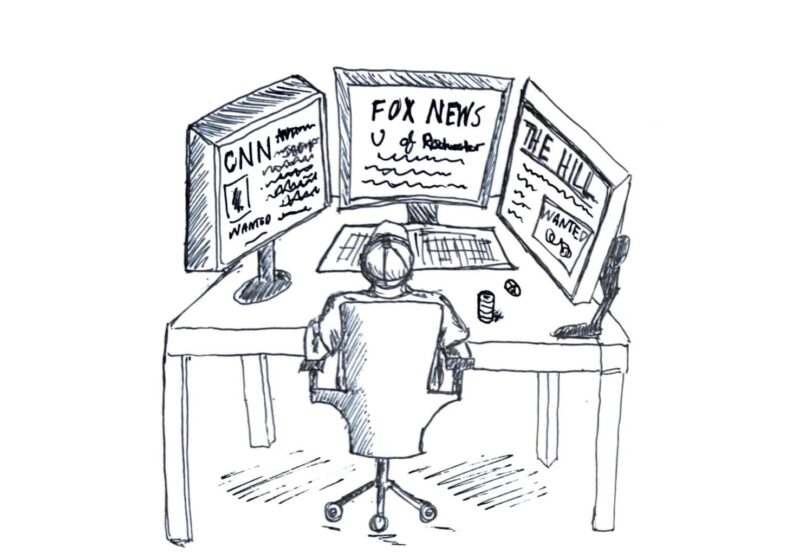Pen and paper truly are for the birds. Laptops and smartphones render smudge marks a thing of the past, but even more importantly, they empower us with the ability to write words more efficiently, store words in a more centralized location, and share words with more of the world. Technology provides us with cleaner and more flexible platforms through which to create. For this we see pen-and-paper nostalgia as misguided, soppy sentimentality in a time where the smarter option is on a screen and in our pockets.
Unfortunately, students at UR are forced to assume the attitude of the hopeless romantic. It’s not that the school doesn’t embrace technology – UR uses “Blackboard Learn” as a platform through which professors upload assignments, syllabi, and announcements for their classes. However, compared to Facebook, which sets the framework that Blackboard “expands” upon, the latter is sloppy, sluggish, and riddled with loose ends like a digital casserole. One of the most frustrating aspects of the program is its “Updates” feature, which, unlike a Facebook notification, requires three steps – excruciatingly slow steps – before the user can access a new document. We know – it’s preposterous to legitimately complain about having to press a button thrice instead of twice. Having to wait for pages to load isn’t even a first world problem – it’s a zero world problem. But it’s a problem nonetheless. Students consume so much time on the iPhone, on Facebook, that it’s pretty much virtual air at this point. Information ambience. Opening up notifications on Facebook through two swift steps is as fundamental to digital life as walking up stairs is to physical life. It’s hard to imagine a campus where students would be okay with stairs that required them to take a step back for every two steps forward – so why should students tolerate a program that requires them to go through one extra page to access a syllabus?
What’s more, Blackboard is vague, inconsistent, and semantically sloppy. Some professors post their syllabi through the “Syllabus” link. Others post it through the “Course Materials” link. This lack of standardization undermines the ultimate purpose of having a centralized module for accessing coursework. Also, what constitutes a “Course Material”? If homework assignments are all distributed digitally, they’re not really material items at all.
Lastly, uploading assignments is a nightmare. At the top of the upload page is a big blue button with the word “Submit”. Its placement and bold color lead to the conclusion that pressing the button is the first step to uploading an assignment, but when you follow that logic, you will find that you’ve submitted nothing. As it turns out, the architects of Blackboard decided to put the big blue “Submit” button at the very top AND bottom of the page in case you decided to scroll down, upload your assignment, and then scroll back up just for the thrill of it. I guess Blackboard programmers value symmetry over intuitiveness.
Blackboard is an unacceptably underdeveloped, knock-kneed platform. By incorporating it as an integral part of its academic environment, UR is legitimizing the kind of crude coding that its own professors would scoff at. If the school truly wants to be on the cutting edge of the technological revolution, it needs to adopt a new platform for professor-student communication that meets the digital standards set by social media leaders such as Facebook and Twitter.




